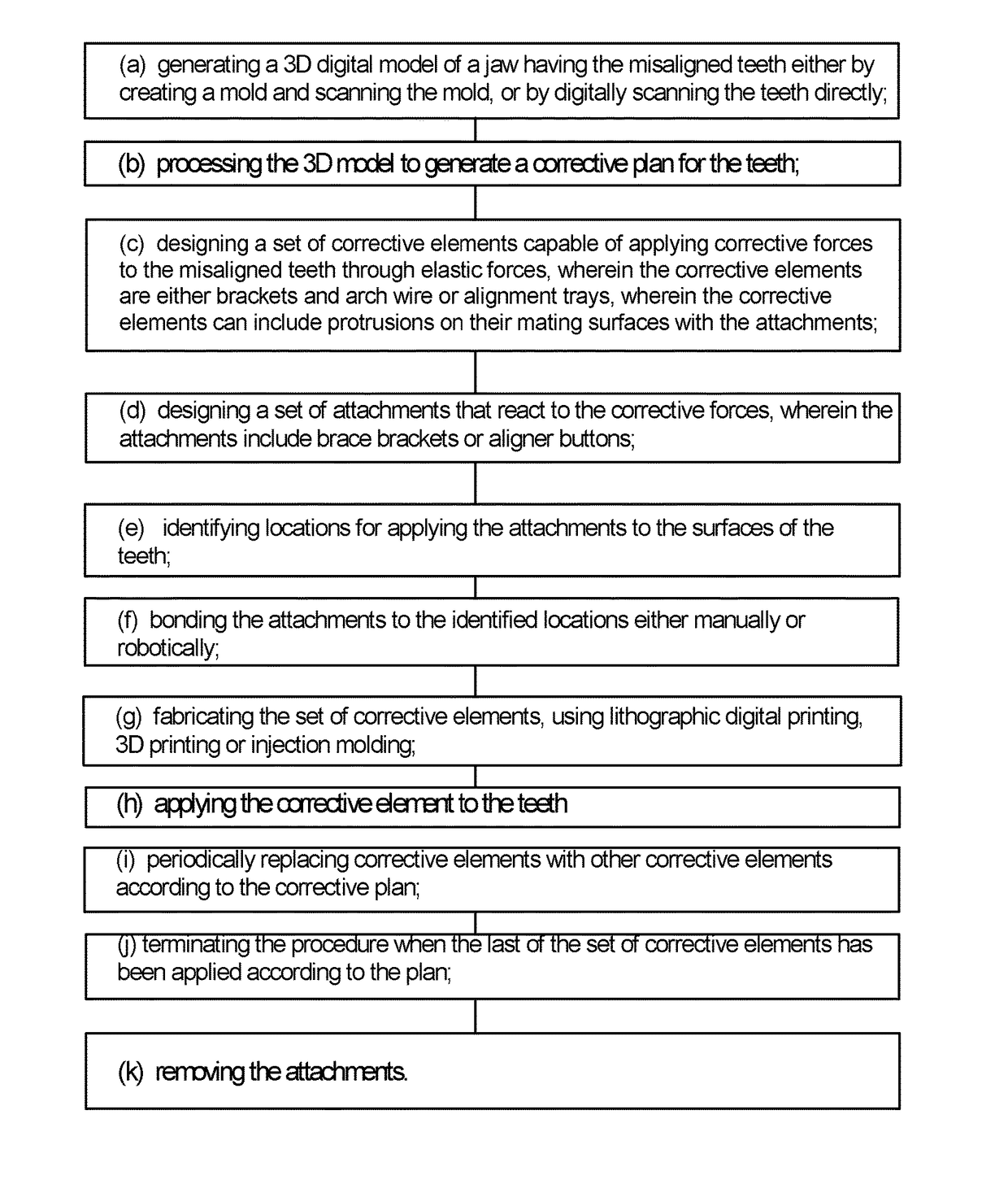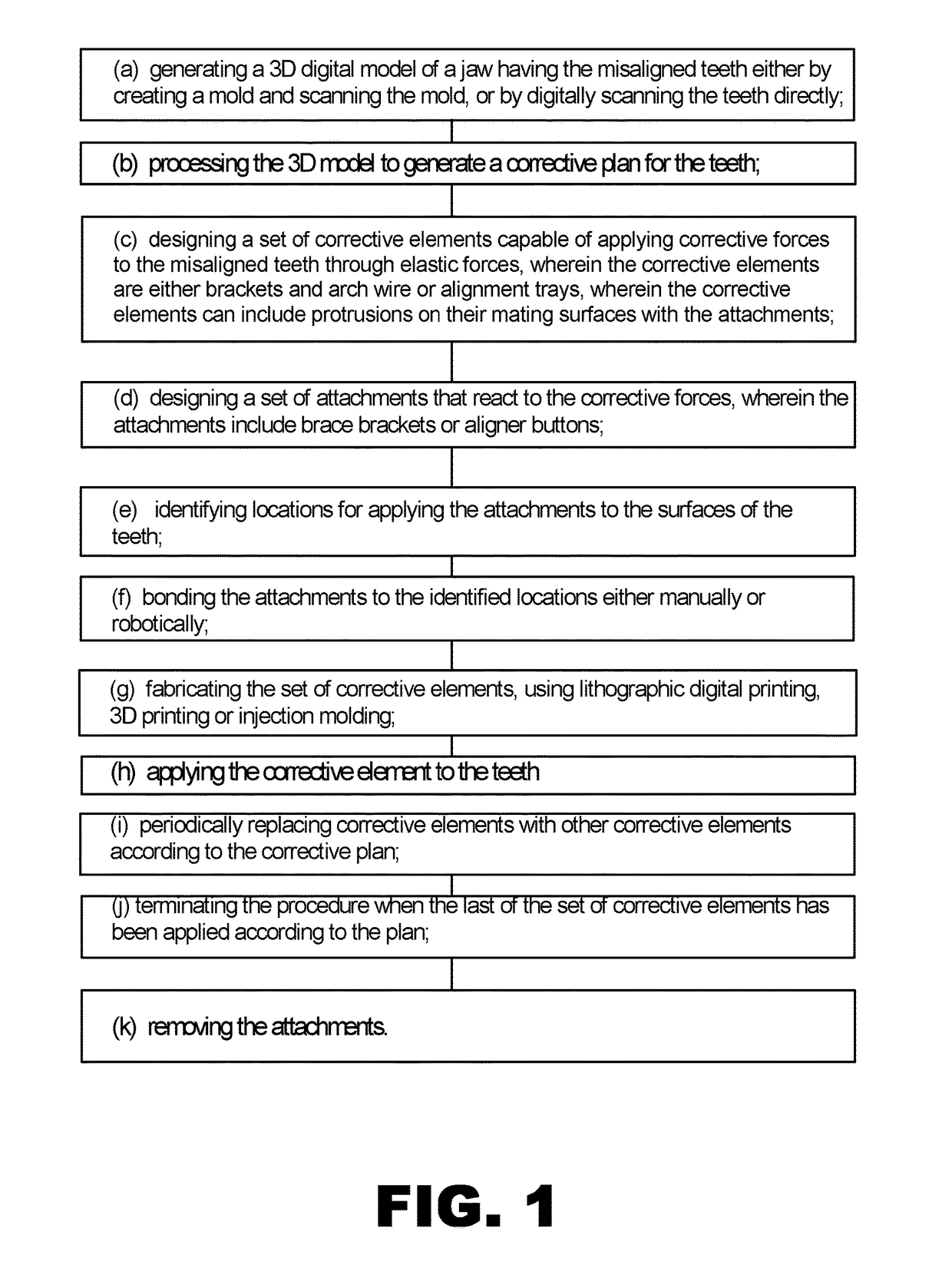Automated Placement of Dental Orthodontic Attachments
a technology for orthodontic attachments and dental implants, applied in dental surgery, othrodontics, impression caps, etc., can solve problems such as aligner misfits, scan errors, and inability to verify to correct errors, and achieve the effect of eliminating errors and improving the correcting of attachment errors
- Summary
- Abstract
- Description
- Claims
- Application Information
AI Technical Summary
Benefits of technology
Problems solved by technology
Method used
Image
Examples
Embodiment Construction
[0051]In the field of Orthodontics, misaligned teeth are corrected by the application of forces and moments over a period of time to progressively cause the teeth to migrate towards a desired location, hence correcting the misalignment. The correction is normally done by affixing mechanical protrusions to the teeth and then bridging them by a fitted retainer that applies corrective forces and moments to the teeth. For braces, the retainer is a wire that attaches to brackets adapted to receiving and retaining a pre-strained wire. For clear aligners, the retainer is a shell Tray molded from clear polymer with pockets that are fitted snuggly over Buttons to apply the desired forces and moments.
[0052]The present invention includes the design of buttons for Tray applications and the process of designing and manufacturing the Trays. The invention applies buttons of pre-designed geometry to the teeth using a robot. The design utilizes 3D modeling of teeth and applies correction algorithms ...
PUM
| Property | Measurement | Unit |
|---|---|---|
| transparent | aaaaa | aaaaa |
| elastic forces | aaaaa | aaaaa |
| corrective forces | aaaaa | aaaaa |
Abstract
Description
Claims
Application Information
 Login to View More
Login to View More - R&D
- Intellectual Property
- Life Sciences
- Materials
- Tech Scout
- Unparalleled Data Quality
- Higher Quality Content
- 60% Fewer Hallucinations
Browse by: Latest US Patents, China's latest patents, Technical Efficacy Thesaurus, Application Domain, Technology Topic, Popular Technical Reports.
© 2025 PatSnap. All rights reserved.Legal|Privacy policy|Modern Slavery Act Transparency Statement|Sitemap|About US| Contact US: help@patsnap.com



